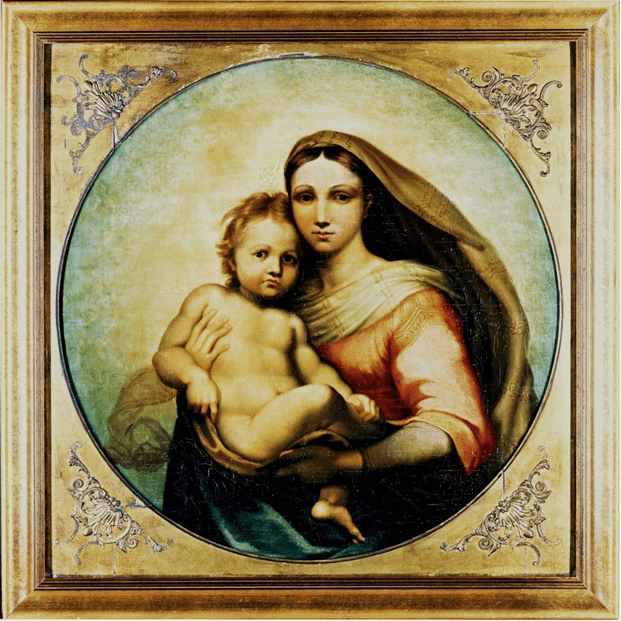Until January 3, 2024 amateur art attributors can draw their own conclusions about the beguiling de Brécy Tondo — up close and in person.
The portrait of the Madonna and Child, which artificial intelligence-assisted researchers attributed to Italian Renaissance master Raphael earlier this year, is on public display for the first time at the Cartwright Hall Art Gallery in Bradford, England.
Purchased in 1981 by the late English businessman and art collector George Lester Winward, the painting is now part of the 30-piece de Brécy Trust Collection, named for Winward’s French ancestors.
Representatives of the de Brécy Trust have not yet confirmed if the painting will be displayed elsewhere after its public debut in Bradford.
How radical technology met Raphael — maybe
Though the de Brécy Tondo’s provenance has long been debated, it was once widely believed to be a Victorian-era copy of Raphael’s Sistine Madonna (ca. 1513-14). But after a team from the Universities of Nottingham and Bradford employed AI-assisted computer-based facial recognition technology to analyze the 95cm-diameter de Brécy Tondo alongside the Sistine Madonna, that theory was largely put to rest: In January 2023, the researchers announced that the mysterious portrait was “undoubtedly” a Raphael masterpiece.
The facial matching algorithm — trained by Professor Hassan Ugail, director of Centre of Visual Computing at the University of Bradford and leader of the study — compares facial features in thousands of dimensions, down to pixel-level. Its analysis found a 97% similarity between the Madonnas, while studies of the Child in each painting yielded an 86% match. (A similarity above 75% is considered “identical.”)
Professor Ugail — who has previously used AI-assisted facial recognition technology to assist with investigations for the New York Times, Bellingcat and the BBC — said that the high match rates led him and his co-authors to conclude not only that identical models were used for both paintings, but that the two works are “undoubtedly” by the same artist. (A prior study of the de Brécy Tondo’s pigments had already placed the painting in the 16th or 17th century and “dispelled the idea that it was a Victorian copy,” according to Howell Edwards of the University of Bradford, who conducted the research.)
Facial recognition technology and other forms of artificial intelligence are still polarizing in the art world. Some enthusiasts, including Ugail, say that their application in the arts realm is “yet another example of wide-ranging potential.” But while advocates say these technologies could revolutionize the art attribution process, many art historians and scholars are skeptical. A common worry is that the market could become flooded with “deep fakes,” given the high financial stakes of art attribution. As the Santa Fe-based art authenticator Richard Polsky told The Washington Post, “It doesn’t take much for someone with money to say, ‘I want that for my new museum and I’ll pay $100 million.’”
About Raphael
The son of painter Giovanni, Raphael was born Raffaello Sanzio (or Santi) in 1483 in Urbino. Some time after his father’s death, Raphael went to study at the workshop of Umbrian master Perugino (Pietro Vannucci). He later moved to Florence, where he was a contemporary of Leonardo da Vinci and Michelangelo Buonarroti.
Called to Rome by Pope Julius II, Raphael painted frescoes in the papal chambers and designed tapestries for the Sistine Chapel. He died in 1520 and is buried in the Pantheon.
If you go
The de Brécy Tondo at Cartwright Hall Art Gallery
Lister Park, Bradford, England
Tel: +44 01274 431212
Open Tuesday-Sunday from 8am-6pm until January 3, 2024 (extended from September 17)
Website













